What’s in it for the Adults? by Rebecca Colby, Guest Blogger
Hands up if you’ve ever done what I’ve done and hidden your child’s favourite picture book? This is the book they ask you to read over and over (and over!) to the point where you can’t bear to ever read it again. While I can’t see your hands, I’m willing to bet I’m not alone.
I admit this isn’t a kind thing to do, but neither is inflicting the same story on an adult every night for months on end—especially one that doesn’t appeal to them. And that is the trick to writing a good picture book—ensuring your book holds strong appeal for both children and adults.
So what elements help guarantee an adult reader will want to read your book more than once? In other words, what’s in it for the adults?
HumourRegardless of age, everyone loves a good laugh. But humour is subjective, and certainly some forms of humour are more readily understood by an adult audience. One, in particular, is satire. Dr. Seuss did satire so well.
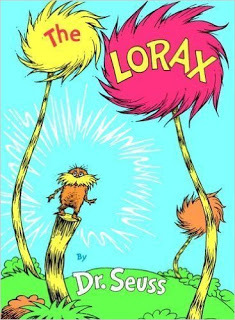
As a young child I loved his book, The Lorax, for its nonsense words and fun rhymes. It never failed to bring a smile to my face and it was the one book I kept renewing from the library (and consequently asking my mother to read over and over).
However, it wasn’t until I reread this book as an adult that I appreciated Seuss’ wit and the satirical poke at environmental issues. Okay, so it isn’t laugh-out-loud funny, but there is a black humour to it that underlies a very important message, and as an adult this satirical humour makes me admire and appreciate Seuss’ work even more than I did as a child.
Humour can also come from intertextuality. This is when the author or illustrator makes references to other texts or images outside their book. For example in Margie Palatini and Guy Francis’ Mary had a Little Ham, the main character Stanley Snoutowski is a pig who seeks fame and fortune on Broadway.
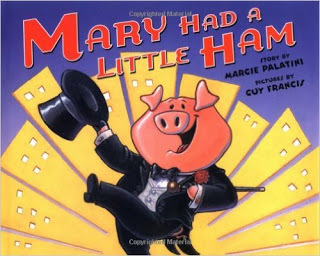
On one of the spreads, there are references to the shows Stanley performs in, like South Pigcific, The Pig and I, Pigmalion, Oinklahoma, The Pork Loin King, and Hamlet. Stanley even meets Broadway producers Hoggers and Hammerswine. While humorous for adults, these references often go over children’s heads.
Symbolism Here again, symbolism can also require readers to make connections to other books, artwork, etc. Anthony Browne’s Willy the Dreamer is a perfect example.
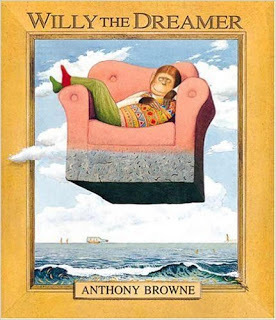
As Willy dreams of being a film star, a sumo wrestler, a ballet dancer, etc, children look for the many ways Browne has seamlessly incorporated symbolic bananas into the illustrations. Adults may be looking for this also, but at the same time they will note visual references and symbols that children may not have been exposed to yet, including symbols and references to the work of Matisse, Henri Rousseau and Salvador Dali.
Sophisticated textPicture books are aimed at our youngest of child audiences, but their language is anything but simple. In fact, picture books are often more sophisticated than early chapter books as they are intended to be read by fluent readers, rather than beginning readers.
Sophisticated text can be aimed at children as a means of extending their vocabulary, or to introduce them to literary devices. Or it can be employed to add something extra for the adults.
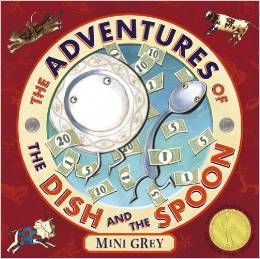
Here’s an example from Mini Grey’s book,The Adventures of the Dish and the Spoon, where she uses sophisticated language that could be interpreted both literally by children and figuratively by adults.
“But the dish was broken and so was I. I let them lock me up and turned away from the moon.”
The dish is literally broken, and children can see that the dish is in pieces. Adults, however, are able to take further meaning from this sentence. They understand that the dish and the spoon have been defeated by life.
Another Margie Palatini book, Bad Boys, illustrated by Henry Cole, uses sophisticated language in the form of word play.

Two wolves disguised as sheep try to fool three ewes into letting them join the flock with a view to eating them. Margie uses appropriate sophisticated language that only the adult audience will understand, but in a context that won’t detract from the story or confuse children. Some examples include:
On the lam. Fleece the flock. Pull the wool over their eyes. The two were in clover.
Interplay of text and illustrationsThis is a strong feature of nearly all picture books, and contributes to them working on more than one level. More often than not, the illustrations portray information that is not provided in the text. And because adults are better able to analyse the interaction between the text and illustrations, it’s an opportunity to add another layer to a book just for the adult audience.
A relatable one for parents is Boss Babyby Marla Frazee.
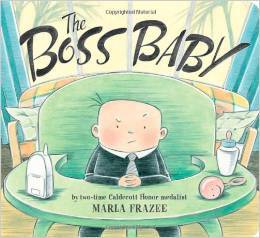
At one point, the text states that “He [Boss Baby] conducted meetings. Lots and lots and lots of meetings, many in the middle of the night.” What we wouldn’t get from the text without the illustrations is that the baby is actually throwing lots and lots and lots of tantrums, flanked by both parents as they attend to his needs of feedings, playtime, and nappy changes.
And let’s not forget the contradictory interplay of text and illustrations where the text tells one story, and the illustrations tell another diametrically opposed story. A great example is Bottomley Cattery by Peter Harris and Doffy Weir.
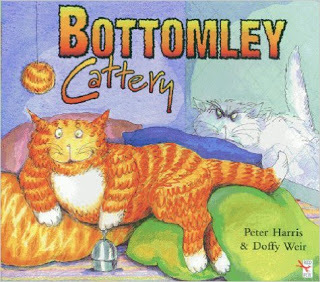
Bottomley isn’t happy about being left at the cattery while his human family go on holiday, but he tries to make the best of it. Or so he says. He claims to have made lots of friends and not to have caused a fuss. But the illustrations, of course, paint a very different picture.
One more book I’d like to mention here is Battle Bunny by Jon Scieszka, Mac Barnett and Matthew Myers.
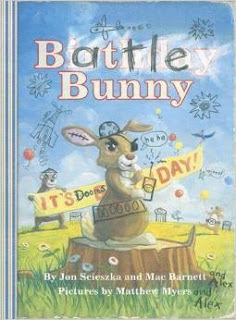
It’s two books in one, with the second story drawn and written over the top of the first. The main character, Alex, is given a book called Birthday Bunny, which he soon defaces and rewrites. In the new story, Battle Bunny is unleashing an evil plan which only Alex can stop. This new story is hand-written and hand-drawn in pencil over the top of the original. The interplay between the two texts and the two sets of illustrations makes for a brilliant concept that most adults will appreciate far more than children. Not to mention the fact that it is nearly impossible to read this book aloud. You end up reading only one story at a time, whereas by reading it silently, you can read the stories simultaneously.
Strong emotional pullWhatever you do, make your reader feel something! Engage them emotionally, be it through humour, joy, fear, or even sadness. Readers are less apt to forget a book—or want to put it down—if it has pulled at their heart strings or touched their inner core. Adults are no different this way. I may hide my children’s books on occasion, but I’d never hide Debi Gliori’s book, No Matter What.
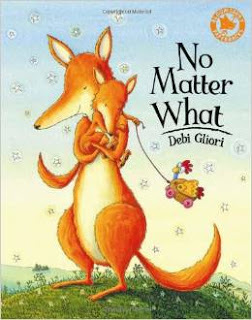
And that’s because it speaks to my soul. It has a powerful message about unconditional, never-ending love that elicits a strong feeling from me. Admittedly, that experience is one of tearing up—but that’s exactly why I pick it up as an adult over and over again. I want to relive that same powerful experience.
Challenge readers’ expectationsThere are lots of ways to do this. Two I’m going to mention are twist endings and using non-traditional story structures. Do you want to keep your adult reader engaged? Then surprise them. Keep them guessing the outcome of your story until the end. Children enjoy predictability to a certain extent but even they will probably prefer a book that surprises them with an unexpected ending.
A story that does just that is Waking Beauty by Leah Wilcox and Lydia Monks.
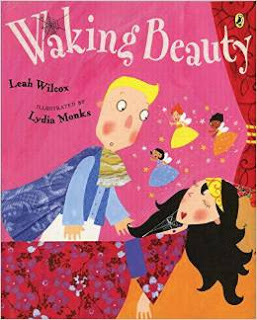
It’s a fractured fairy tale and we all know roughly how the story is supposed to pan out--with the prince waking his beauty with a kiss. But although the prince gets his kiss, the ending is anything but predictable. (And because I want you to be surprised when you read it, I’m not going to spoil the ending here.)
Another way to challenge reader’s expectations is to give them a story structure they’ve not seen before. Most picture book writing advice recommends the use of the standard story structure with a beginning, middle and end, but as with so many writing rules, once you know them, you can start breaking them. And here are two that break them so well:
The Day the Crayons Quitby Drew Daywalt and Oliver Jeffers (structured as a series of letters from crayons)
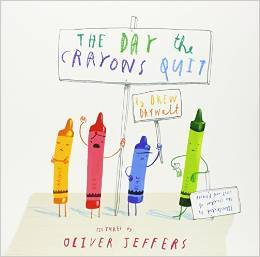
and Shark vs Train by Chris Barton and Tom Lichtenheld (structured as a series of competitions between a shark and a train without a decisive winner).
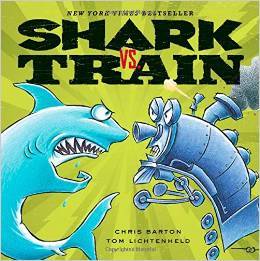
Before I wrap up, I want to thank the Picture Book Den for hosting me today! It’s been fun finding examples to share. And if there are any examples you’d like to share, or elements I’ve missed (I’m sure there are plenty!), please feel to tell me about them in the comments.
The bottom line is great picture books hold universal appeal. Make sure your own books offer something for everyone, regardless of their age. And bear in mind, your books need to hold a reader’s attention over repeated readings. Like this one…
Oops! That’s strange. I seem to have mislaid my favourite picture book. I just had it out last night reading it to my kids a few times. I was going to tell you about it and explain why it’s my favourite and perhaps read it to my children again tonight but it’s not where I normally keep it on the bookshelf. I wonder if they’ve seen it?!

Rebecca is a picture book author and poet. Her books include: It’s Raining Bats & Frogs (Feiwel & Friends/Macmillan, 2015) and There was a Wee Lassie who Swallowed a Midgie (Floris Picture Kelpies, 2014).
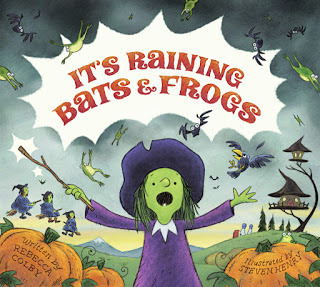
Before writing for children, Rebecca inspected tights, taught English in Taiwan, worked for a Russian comedian and travelled the world as a tour director. Learn more about Rebecca at www.rebeccacolbybooks.comor follow her on Twitter at @amscribbler.
Published on August 23, 2015 01:10
No comments have been added yet.



